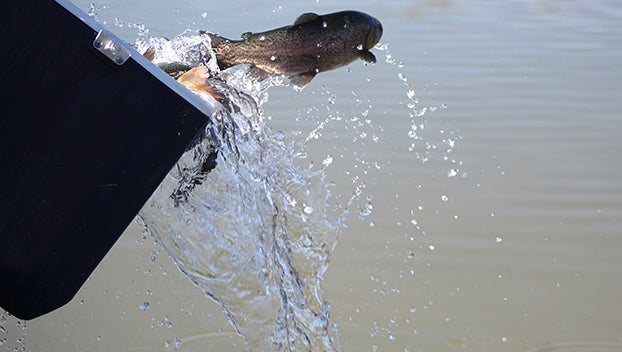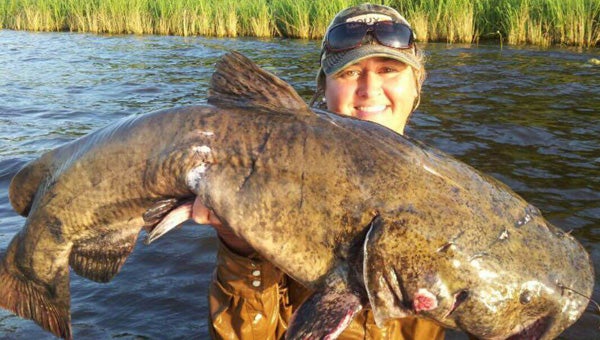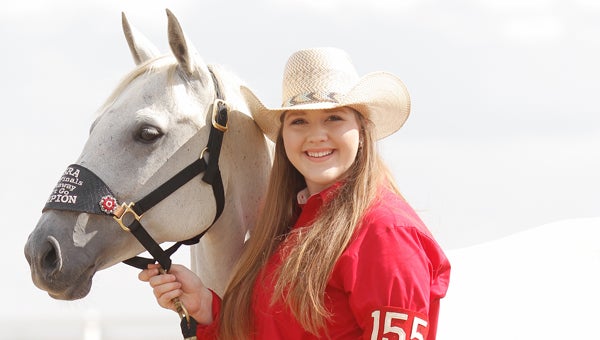Fishing is fickle in February
Published 12:01 am Sunday, February 3, 2013
Transition is a big word in the fishing world this month.
The fishing can be great or it could be as tough as convincing your wife that fishing in February is more important than work. You may have your best day ever, and you could have your worse day ever.
There is usually no medium in February. In early February, the bass casters will fish what I call a controlled chaos pattern. The big females, fat and full of roe, will be holding anywhere from 2 feet of water down to 25 and even 30 feet of water if you are fishing a man-made reservoir.
Your friend is higher water temperatures and the culprits are cold fronts. Fishing in February just before and during the passage of a cold front offers us the best opportunity to catch numbers of big bass as well as a double-digit-pound fish if the waters you fish are home to 10-pound plus bass.
Sadly, the local lakes are no longer in this great category at this time.
The sows will be cruising the shallows checking out the busy little male bass (what some call buck bass) as they compete for the best nest building areas. The larger fish, or the most aggressive males, will rule over the smaller and weaker fish in this battle to build the best home for their fry.
That’s Mother Nature’s way of passing on the genes of healthier fish.
Once the male has a good spot cleaned away, he sits back and waits. The sow bass will then cruise the shallow flats searching for the best mate that built the best nest in the best location.
In some cases, she practices polyandry. I have spent countless hours watching bass spawn back in the good old days of yesteryear when the coontail moss was plentiful on Lake Concordia and water levels were high enough to flood the swamp in the upper end of this small Mississippi River land-locked oxbow lake. The moss filtered the water back then, which increased visibility from below as well as above the surface.
Water clarity, good water clarity, is a must when site fishing or just watching fish spawn. I recall watching three buck bass continuously circle an underwater stump in single file. As each took their turn on one side of the stump, the buck bass would lay on their sides, kick their tails and fan debris from the bottom of the lake creating a dish pan size round circle. That is the nest, and this was the first time I witnessed more than one male bass building a single nest.
I watched for probably an hour. Watching, learning and not casting. It’s almost like a disease, bass fishing. It gets under your skin, imbeds in your brain and more often than not, your mind is not where it should be even if you are locked on the awful confinements of dry earth miles from the nearest water.
I left that nest, trolled about for a few hours and returned. This is not a place for a lot of fast movement above the water’s surface and trolling motor noise along with the sharp ping, ping of sonar transducers as the devices fire an almost continuous signal from your boat to the bottom and back. You may as well plug Jimi Hendrix in and jack your volume to wide open throttle as he screeches out the Star Spangled banner in a way that has never been duplicated.
To the fish, fast movement and noise from above means run, or should I say swim, away as fast as possible.
My belief is the increase in population of the lowly cormorant (aka water turkey) is associated with the fear bass and other fish have from above the water’s surface.
I have caught, and seen others catch, bass with this puncture wound in their side that no doubt came from the spear like beak of this nasty bird.
I will break away from this so called endangered, protected species now before I incriminate myself for past Federal crimes committed against this well protected trash of a bird.
The largest female bass of the year are usually the first to move to thin waters. You can catch these fish with a stealthy approach.
I do ask you this: Since our bass population has dwindled over the past decade or so, please do your part for at least the next two months and practice CPR (catch, photograph and release) while fishing.
The male builds the nest and protects the fry until they reach the fingerling stage. Removing the small male bass from a nest is just as bad as filleting an 8-pound female bass loaded with roe. Have a great spawn and be quiet.
Eddie Roberts writes a weekly fishing column for The Democrat. He can be reached at fishingwitheddie@bellsouth.net.





